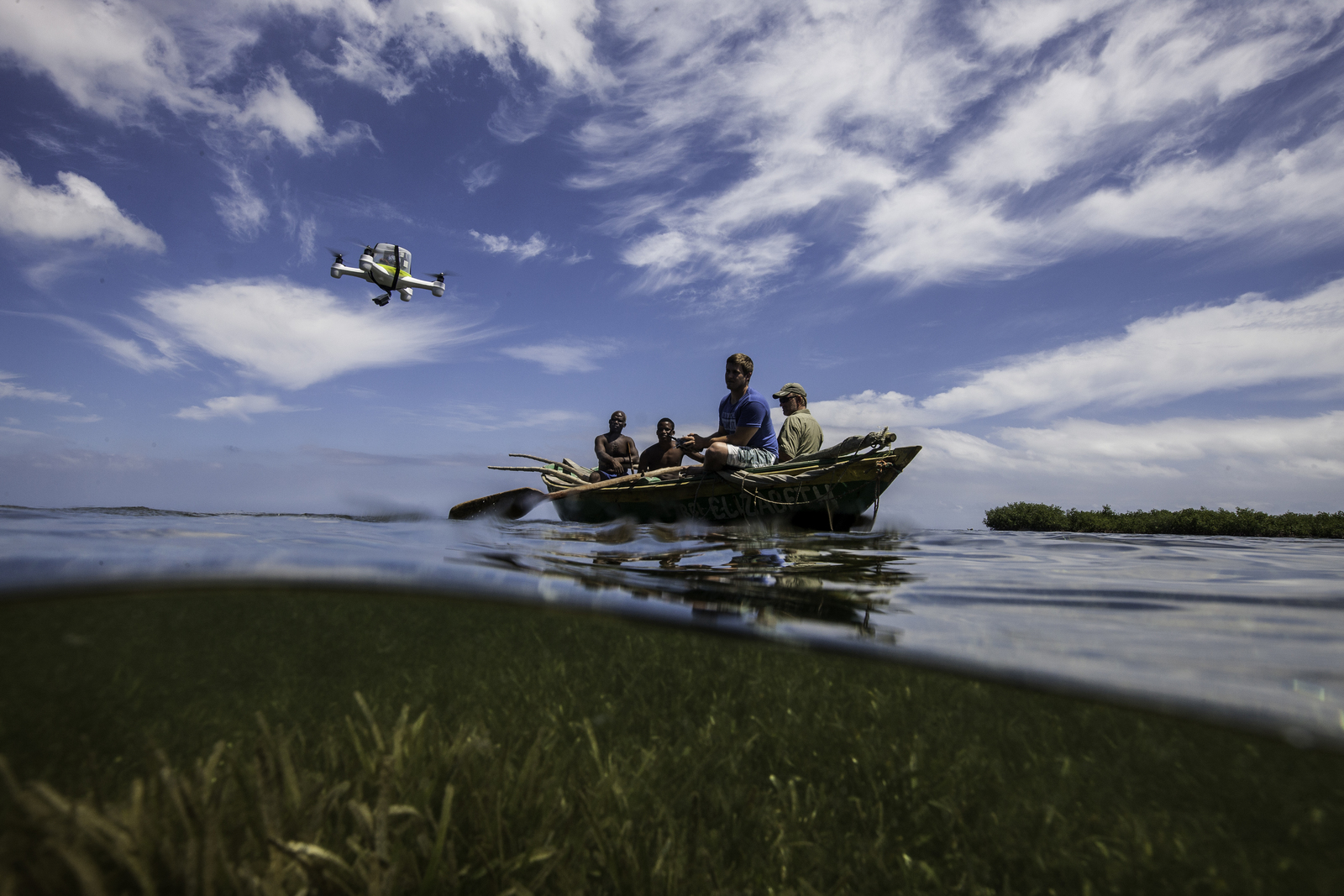What you can measure, you can manage – how Nature Tech can help us solve the nature and climate crises

Nature is extremely complex, but modern data science and technologies like bio-acoustics, e-DNA, remote sensing and monitoring can help provide simple, accurate scores and metrics, allowing us to better value nature. It is crucial that we value rather than commodify nature, and any system should guard against the latter.
Read more
Related articles for further reading
At first sight, drones, satellites, and apps might seem to bear little relation to stabilising the climate. However, technological advances can help nature thrive, which of course is directly connected to combatting climate change. The application of technology to nature-based solutions (NBS) makes sense, both for the sake of the planet and financially, since an estimated $44 trillion of economic value relies on nature.
Nature Tech includes innovations that mimic the Earth’s ecosystems or are focused on increasing nature’s ability to regenerate. It describes technologies that can accelerate the implementation of nature-based solutions at scale: deployment, such as drone technology for reforestation; monitoring, reporting and verifying (MRV), through satellite monitoring, LiDAR and eDNA testing; transparency, by the use of blockchain for carbon transactions and registries; and connection, such as mobile apps that can connect local communities to higher-paying markets, helping to drive sustainable use of natural ecosystems.
The physical manifestation of tech, such as drones and satellites, can help activate NBS and move us along the right path, but to really incentivise and scale it, the major role for tech is around harvesting and making the best use of data for deployment and MRV of NBS, and giving people confidence in how nature can help us deliver on our climate targets. This in large part can be classified as the “measurement” of NBS.
Demonstrating and monitoring the effectiveness of NBS is hard. Nature Tech can help to measure the benefits nature provides effectively; with acceleration, data integration, augmentation (getting more information or insights) and auditing or accounting (building trust and holding people accountable) of NBS.
To date, carbon sequestration and storage is the ecosystem service for which we have the best data that we have been able to measure and track at reasonable precision and scale. The ability of natural environments to absorb and store carbon is measured and valued in the form of carbon credits. Limitations in measurement have led to carbon often being used as a proxy for the many biodiversity, ecosystem and community co-benefits that come with, for example, a carbon-dense tropical forest, such as water quality and increased biodiversity. Machine learning combined with remote sensing data can also reduce costs and increase accuracy, scalability and validity of NBS.
Nature is extremely complex, but modern data science and technologies like bio-acoustics, e-DNA, remote sensing and monitoring can help provide simple, accurate scores and metrics, allowing us to better value nature. It is crucial that we value rather than commodify nature, and any system should guard against the latter.
It’s important for scalability that Nature Tech is trustworthy with as much open data sharing as possible. We need to be transparent and ensure that the solutions delivered by technology companies are scientifically sound and can be accessed and employed by those who need them. Technology won’t stop climate change or nature loss, but it can help people trust that investing in a nature-based carbon credit really is reducing or removing material amounts of CO2 from the atmosphere. Increased processing power, better algorithms, machine learning and widely available data make it possible for nature-based carbon projects to be monitored and credited at a greater scale, which will increase confidence.
Worldwide, over 1.6 billion people live and work in natural ecosystems. These local communities are often involved in the implementation of NBS, providing tree measurements through an app, scanning crops using their phones, planting mangroves assisted by satellite data, or protecting forests from illegal miners using drones. By having better information and data on agroforestry systems, commodity pricing, or routes to higher-priced markets for crabs harvested from mangrove areas for example, communities can increase income, productivity, and quality of life.
Added to these benefits, technology also enables communication and collaboration between the local communities and global financial institutions, for example via mobile apps, whereas blockchain solutions help to maintain traceability and transparency of information and finance flows. This enables small communities to tap into globally significant streams of funding, and companies to channel money into the NBS that help to counterbalance their actions elsewhere.
As Nature Tech advances continue, we need to put safeguards in place to ensure its integrity. Initiatives such as the Voluntary Carbon Market Integrity (VCMI) Initiative for the voluntary carbon market, the Science Based Targets Network (SBTN) for nature impacts and the Taskforce on Nature-Related Financial Disclosures (TNFD) already produce guidance for companies on how to contribute and benchmark their contribution. If these initiatives were to include a standard for data sharing, access and transparency, companies could easily be judged on and rewarded for how they measure up.
Through monitoring and measuring, Nature Tech can help address the challenges of climate change and nature loss, supporting global sustainability goals. Given the point we are at in these crises, we need all the innovation, speed, and scalability that technology can offer to bring us back on a path towards a stable and nature-abundant planet.
Download and read the full white paper on Nature Tech here.